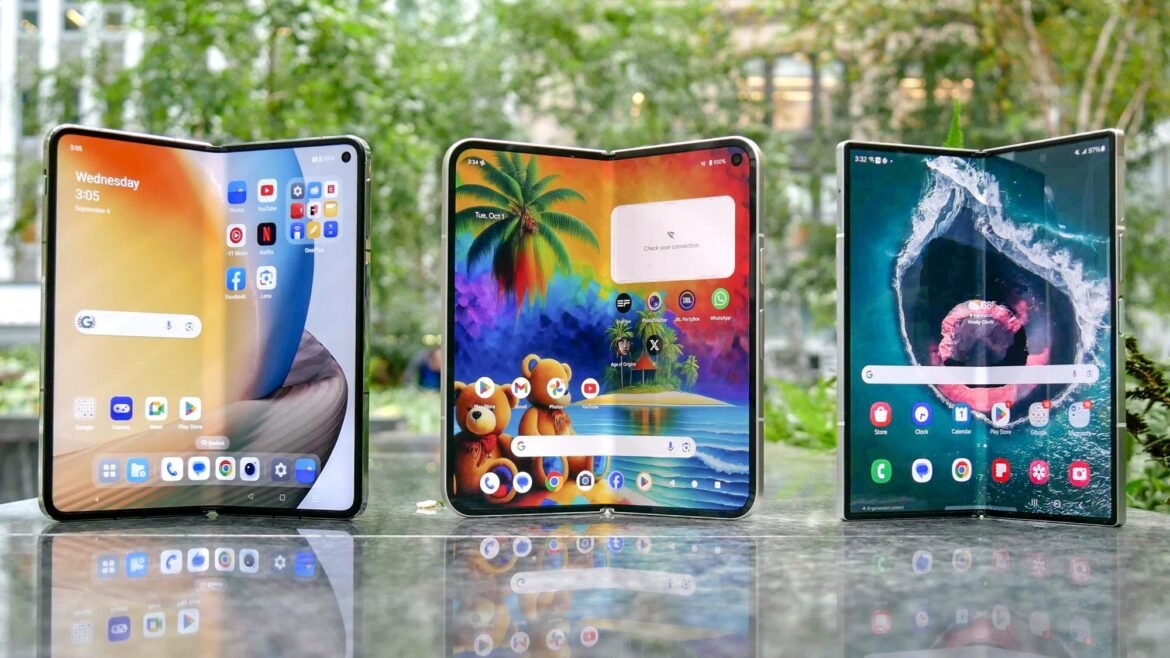In a world where smartphone innovation seemed to be slowing down, foldable phones entered the scene like a breath of fresh air. Combining the nostalgia of flip phones with futuristic displays, brands like Samsung, Huawei, Motorola, and now Google have bet big on this new form factor. But the question still lingers: Are foldable phones just a flashy gimmick—or are they the future of mobile technology?
Let’s dive into the pros, cons, and what foldable phones really bring to the table.
📱 What Are Foldable Phones?
Foldable phones use flexible OLED displays that can bend or fold without breaking. There are mainly two types:
- Book-style Foldables (e.g., Samsung Galaxy Z Fold series) – unfolds into a small tablet.
- Clamshell-style Foldables (e.g., Motorola Razr, Galaxy Z Flip) – folds into a compact pocket-sized device.
✅ Why Foldables Might Be a Game Changer
1. Bigger Screens, Smaller Devices
Foldables offer a large display (up to 7.6 inches) that still fits in your pocket—perfect for multitasking, watching videos, gaming, or productivity.
Imagine carrying a tablet in your jeans. Foldables make that possible.
2. Multitasking Made Easy
Many foldables support multiple active windows at once. You can check email, chat on WhatsApp, and browse the web—on the same screen.
This appeals especially to business users, students, and tech-savvy professionals who want more from their devices.
3. Improved Design and Durability
Early foldables were fragile and prone to breaking, but 2024-2025 models are tougher, sleeker, and waterproof. New hinge technology and screen protectors have drastically improved durability.
4. Innovation Pushes the Industry Forward
Whether you buy one or not, foldables are forcing brands to innovate—rethinking screen materials, software design, and user experience. This benefits all smartphone users.
❌ Why Foldables Might Be Just a Gimmick
1. High Price Tag
Foldables are expensive. Most models cost $1,000–$2,000, making them less accessible than traditional phones. That’s a big ask for a new form factor.
2. Limited App Optimization
Not all apps are optimized for foldable screens. Some stretch awkwardly or don’t support multi-window use properly. Until more developers catch up, it can feel like a half-baked experience.
3. Durability Concerns Remain
Despite progress, foldables still have moving parts—and moving parts break. Dust in hinges, screen creases, and long-term wear can be issues over time.
4. Battery Life Trade-offs
Bigger screens use more power. Foldables often need larger batteries or smarter software to manage consumption, but they still lag slightly behind regular phones in longevity.
🤔 So, Gimmick or Game Changer?
Answer: They’re both.
Foldable phones are still evolving, and while they may not be mainstream just yet, they’ve already disrupted the industry in a major way. For early adopters and tech enthusiasts, they offer a futuristic and highly functional experience. For others, they’re still too pricey or niche to justify.
But one thing is clear—foldables are not going away. As prices drop, app support improves, and designs mature, we may all one day carry a phone that bends, folds, or rolls.
💡 Final Thought
Foldables might not replace slab phones tomorrow, but they represent where innovation is headed. Whether you call them a gimmick or a game changer depends on how you use your phone—and what you expect from the future of mobile tech.

